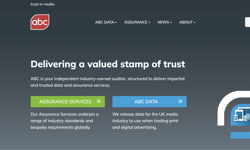Adestra says: A decade of email marketing data shows the email channel is the fastest growing of any other channel in the marketing mix. Ahead of the likes of SEO, content marketing, paid search and direct marketing, Email’s ROI has risen from 66% to 73% since 2008 (respondents rating ‘excellent’ or ‘good’ ROI).
Having surveyed over 1,100 digital marketing experts, The Econsultancy/Adestra Email Marketing Industry Census 2016 shows how digital marketing has matured over the years, relying on email marketing as a central focus with true measurable results, rather than a passing trend. In contrast, the allure of ‘trendy’ channels like social media have started to fade, evidenced by being the only decrease in focus by both client-side and agency respondents.
Henry Hyder-Smith, CEO at Adestra, says: “It’s not just email marketing technology that has evolved in the past ten years, but also the mindset of marketers. The last decade has shown an increased integration between the technologies and channels used, shifting away from broadcasting singular messages across all possible channels to carrying out better segmentation and increasingly sophisticated personalisation. We’ve also seen a move towards focusing on business benefits and customer-driven marketing.”
There is still a frustrating disconnect with the proportion of spend marketers afford to email. The 2016 Census shows that companies investing at least a fifth of their marketing budgets on email are eight times more likely to see sales attributable to it in excess of 50%. In addition, the last decade has seen the cost of acquisition and customer retention going down and loyalty going up as marketers have shifted from a batch-and-blast approach to a more segmented, one-to-one approach, investing in customer relationships. As this shift continues, it remains to be seen if this brings with it the necessary shift in proportional spend.
However, significant challenges remain, still more work is required for businesses to achieve success in implementing automated email programmes. Just 7% of companies deem the implementation of their automated email marketing programmes as ‘very successful’, unchanged from 2015. Looking at the triggers that companies are using, less than a quarter of client-side respondents are sending automated emails based on abandoned baskets, date notifications and timed content programmes through sales cycle.
Underlining consumers’ predisposition towards more personalised messaging, the findings point to a direct link between personalisation and email ROI. Companies claiming to be proficient in personalisation are more than twice as likely to rate the performance of their email campaigns as ‘excellent’ or ‘good’ compared to those not personalising. However, 79% of companies are still employing what they consider to be a ‘basic’ approach to email segmentation.
Henry added: “It is fantastic to see that marketers have a positive outlook to the future of the industry, and exciting times as they look to improve their use of behavioural triggers, optimise customer journeys and engage in the one-to-one communication model of the future.”
In addition, the impact of digital agencies’ expertise in email marketing is significant – they achieve a significantly higher ROI than their in-house counterparts, not to mention taking advantage of more automated triggers, and using more email-related services provided by email providers.
Looking to the future, particularly with expected data regulations coming from the EU, marketers will need to pay closer attention to their data management and acquisition practices. Currently, the report reveals that 53% of companies are yet to become compliant, so expect a more forensic approach to data being taken by marketers in the coming year.
The full Email Marketing Industry Census is available for download here.










